Eliza Wheeler is deep into a project, so I’m filling in to bring you an interview with the delightful Marfé Ferguson Delano. Marfé is the award-winning author of more than 20 children’s books published by National Geographic (check them out on her website). Her most recent titles include Welcome to the World: A Keepsake Baby Book and the picture book Baby Animals. A graduate of Duke University, Marfé lives in Alexandria, Virginia.
I wanted to talk with Marfe´about her process, especially when it comes to the lively and appealing books she writes for a series we share, Explore My World. Her latest, Baby Animals, is one that will become an instant favorite among kiddos and adults alike.
Every page is a treat. Marfé’s text sings, inviting readers to imagine the lives of baby animals. *stops to count* There are at least 30 different babies shown on these 32 pages, in the kind of photos Nat Geo is famous for. Sprinkled throughout are double-page spreads that give more information, talking about what baby animals eat, how they stay clean, and the kinds of things they learn as they grow.
Jill: How did you begin writing for National Geographic Kids?
Marfé: I’ve worked in publishing ever since I graduated from college, first as an editorial assistant at a children’s book publisher in New York, then as a magazine copy editor, and eventually as a copy editor at Time-Life Books in Alexandria, Virginia. One day the head of the Time-Life editorial department called me to her office and said that several editors had remarked on the extensive rewrite suggestions I marked on the manuscripts. Uh oh, I thought, I’ve gone too far. But instead of asking me to stick to grammar, spelling, and punctuation from now on, she offered me a chance to try my hand as a staff writer!
I started out with picture captions and moved on to writing longer essays for several Time-Life Book series, on topics ranging from UFOs to gardening to Civil War weaponry. I worked with incredibly talented and generous editors who critiqued my writing and taught me a lot about the craft of narrative nonfiction. And writing about such a wide range of subjects helped me learn to be versatile.
After my children were born I started working freelance on adult and kids books for Time-Life. One day I got a call from an editor at National Geographic, who said she had heard about my work and wondered if I was interested in writing a children’s book for them. Of course I jumped at the opportunity! That book, called Sky, was all about the sky and the atmosphere and the weather. I’ve been writing nonfiction children’s books, both series books and stand-alone titles, for National Geographic ever since.
Jill: Which comes first for this Explore My World series, text or photos?
Marfé: Although the amazing photos are a huge part of what make this series so appealing, the books are actually text driven. I write the text first, then the illustrations editor finds the images that help bring the narrative to life.
One of the first things I do with one of these Explore My World books is start a word list. I jot down words that come to mind when I think about the subject. For Clouds, for example, my list began: fluffy, puffy, cotton, big, scary, billow, float, race, scud, scoot, blow. I add to the list as new words occur to me (daydream, poof, puff up) or when I encounter intriguing ones in my research—which, by the way, includes reading poetry (tattered, shredded, ribbons, seamless). When I get stuck with the writing, I go back to the list and play with the words.
That said, as soon as I begin researching a subject, I start trying to picture the book in my head. I think about structure and pacing, and I make a list of the images I envision. So far my earliest drafts for this series have been hand-written on index cards. I spread the cards out on the dining room table, shuffle them around, mix cards from different drafts together, and so on. At this point, I’m concerned more with content and flow than language, although if a pleasing turn of phrase pops into my head, I certainly write that down. Eventually I find the story line, and I think, of course! It’s so simple, so obvious! What took me so long?
Jill: After researching your subject, how do you begin putting that into language a preschooler can understand?
Marfé: I wish I had a magic formula to share (or to sell!) but basically, I have to try a lot of things that don’t work before I find a way that does. I have to live with the subject and my index cards and word list and research notes for a while. A long while, which can make meeting deadlines a challenge. If I have trouble getting a handle on a subject—and I almost always do—I keep doing more and more research and rereading my notes.
Once I move from my index cards to the computer, my drafts get way too long and complicated, as I get carried away with my own prose and all the details I think I have to include. So I keep going back, trying to refine, to simplify, to focus on the story, to not take anything for granted. I imagine telling my 4-year-old neighbor Ella about the subject. I do this out loud, in my office, in the shower, walking the dog, cooking dinner.
One of the most important things I do, maybe the most important thing for me personally, is to experience the subject for myself, on a physical level. So far, the subjects I’ve tackled for this series—butterflies, frogs, clouds, baby animals, trees—have made this step pretty easy. I take the time to really look and listen and maybe even touch and smell, trying to leave my preconceptions behind and to just open myself up to the wonder of nature, to feel connected.
When I was working on Clouds, every time I went outside, I looked up and tried to identify the types of clouds I saw. When my husband and I went out, I always asked him to drive so I could keep my eyes on the sky. One breezy afternoon I spread a blanket on the grass and lay on my back and watched clouds for over an hour, astonished by how quickly they moved and changed. When I took my dog out for his late-evening walk, I watched the clouds drifting across the moon, hiding it for a minute or two, and “Peek-a-boo!” popped into my head, and that made it into the book. I think it was a gift from the clouds, for paying attention.
————————————-
Thanks so much, Marfé, for agreeing to join us today. I’m happy to learn that I’m not the only one who struggles (and obsesses!) when tackling big subjects for this age group.
National Geographic was kind enough to send me Baby Animals for a giveaway. My next book in this same series, Nighttime, was also released this week, so I’m giving away TWO books this time, one each to randomly-drawn readers who leave a comment by July 24th.
 I’ll announce winners in my next post on July 28th. Thanks for entering! And please check out the other books in this series:
I’ll announce winners in my next post on July 28th. Thanks for entering! And please check out the other books in this series:
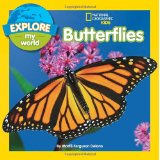
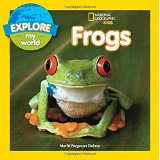

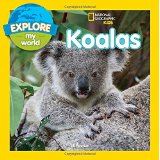
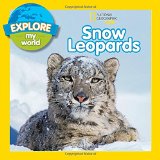
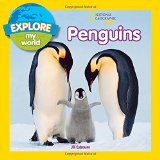
ATTENTION: It’s not too late to win a copy of Penny Parker Klostermann’s fantastic new book, There Was an Old Dragon Who Swallowed a Knight. Do that here.
Whew. I think that’s it for today. Thanks for dropping by!

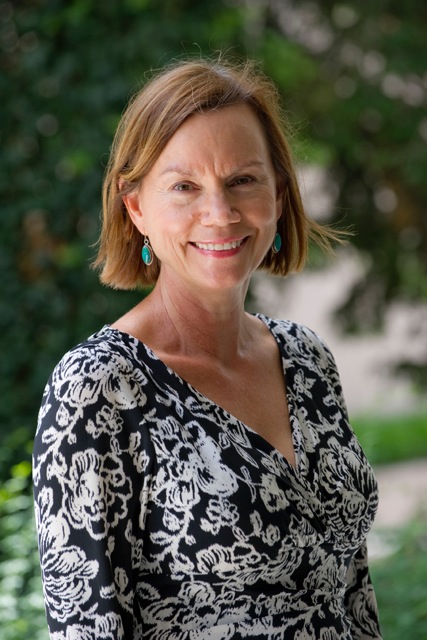
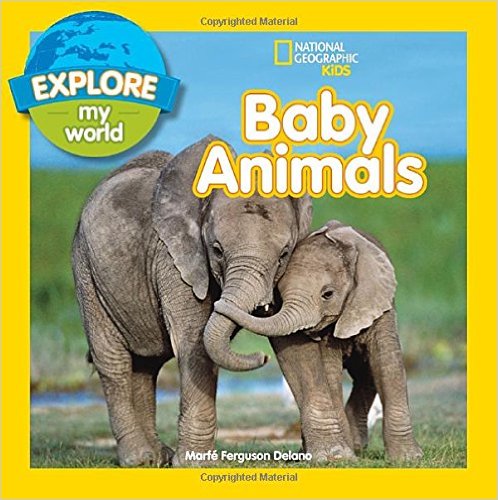
Thank you Jill. I enjoyed hearing Marfe’s process of shuffling index cards around to help find her story. Might have to give that a try. Wonderful interview.
You’re welcome, Dorothia. Let me know how the index cards work for you.
I hope the card idea works for you, Dorothia. It can be fun!
“I have to try a lot of things that don’t work before I find a way that does.” So true! Loved reading about Marfé’s process. Thanks, Jill!
I hear you, Linda! Trying to find my way into a story or nonfiction project is one of the toughest parts.
Thanks, Linda! I find that’s true for so many things in life, not just writing. Gardening, for example. I often transplant something 2 or 3 or more times before I find the spot that pleases both the plant and me!
Thanks for this wonderful interview! I’ve enjoyed reading these Ntl Geographics for the youngest readers. I think they’d be so fun to write. Maybe someday… Thank you for sharing your process!
Glad you’re liking the books, Tina! They ARE fun. That’s what keeps us wanting to write more. 🙂
I love hearing that people like these books, Tina. They’re among my favorite projects ever, giving me great pleasure and satisfaction–once they’re finisihed, that is!
“So far my earliest drafts for this series have been hand-written on index cards. I spread the cards out on the dining room table, shuffle them around, mix cards from different drafts together, and so on.”
— My background is in screenwriting, so I’m thrilled to see that the commonly used index card method of outlining stories is applicable to picture book writing, as well. I’m looking forward to reading both Marfe’s and Jill’s Nat’l Geo books for kids.
Thanks, Rita! I used to cut apart my nonfiction and spread paper strips all over the floor. I like the index card method much better.
So cool to think I was using a screenwriting method! Thanks for letting us know, Rita.
I like your idea of starting with a word list and writing on index cards which can easily be moved around. You really have a dream job–writing about beautiful subjects to be combined with National Geographic pictures!! Thanks for your information.
I loved hearing how Marfe organized her information, and I hadn’t tried a word list before. I will now! Thanks for reading, Dorothy.
Dorothy, I agree that it’s a pretty terrific job! Re the word list: I like doing this because it helps me keep things playful and fun, instead of feeling overwhelmed by the task of presenting a complicated subject in a way preschoolers can understand. And it feeds my lyrical side, which I’ve really just started exploring in the last couple of years.
Thanks for the peek into your process. I love that the clouds gave you a gift for paying attention!
I loved hearing that, too, Buffy. 🙂
Buffy and Jill, I almost left that part out, thinking it sounded too mystical and weird, but I really do believe in connections, synchronicity if you will, so in it stayed. I’m glad it rang true with you!
It’s great to know your process. I use index cards, too. If I should win the giveaway, please write a note inside the book to the Little Free Library Walnut. I’ll read it and pop it inside my box of books, in my front yard, to share with others.
I’ll be sending out the books, Nicole. If you win, I’ll see if Marfe could send you a bookplate with that inscription.
I’m happy to do it for whoever the winner turns out to be. Good luck, Nicole!
This is perfect timing, as I sit struggling with how to turn a chapter in a biography into a picture book. I’ve started over–completely over– about 5 times. I may be getting closer. I like the idea of word lists and cards. I think I’ll try that method with this particular story.
You’re lucky to be working with Nat Geo photos. It truly must be a dream job!
Susan
Books4theCuriousChild.com
Good luck, Susan!
Susan, I do feel very fortunate to have this opportunity. Good luck with your picture book bio!
Beautiful books that help kids learn. What could be more wonderful than that!
You said it, Kathy!
Yep, and these books are beautiful! I am always blown away by the photographs the illustrations editors find.
This was such a great post…so interesting to learn about the process. My kiddos love all things National Geographic. Thanks for sharing!
Thanks, Katie! I love hearing about other writers’ processes, too. That’s why I love an interview.
Thanks, Katie!
Great interview! Congrats on your success!
Thanks, Katy! 🙂
Jill – great interview!! I have long admired the Explore My World books and so have my grandkids!! Thanks!
Thanks, Mary! And you’re welcome. Nat Geo’s photos always blow me away.
Mary, I love hearing that you’re sharing these books with your grandkiddos! Thanks for letting us know.
Great interview. Thank you for this post! Looking forward to seeing the books.
Thanks for stopping by, Amy! 🙂
Yes, thanks, Amy! I hope you enjoy the books.
I loved this interview. I absolutely love the idea of index cards. I am going to try this out on my own NF story. Thanks.
Hope it works for you, Debbie!
Debbie, I’m so glad you enjoyed the interview! For me, another benefit of the index cards is that it gets me away from my computer. I go to the kitchen or dining room or porch, anywhere away from my home office. And I think I’m braver when I’m writing with pen and ink, more daring, than I am with my hands hovering over a keyboard.
Thank you Marfe for letting us in on your process. I love that you read poetry for (word) inspiration.
You must be a poetry lover, too, Quinette. I’m goad you enjoyed the interview!
Glad! I’m GLAD you enjoyed the interview!
How wonderful to get an insider glimpse into your writing process, Marfé, and see how evocative word lists can grow into lively and beautiful stories. And how wonderful also to witness the fellowship amongst writers as you and Jill partnered on this interview. National Geographic is fortunate to work with such talented and lovely authors!
Thanks for stopping by, Jennifer! 🙂
I love the community of children’s book writers–and editors, Jennifer!